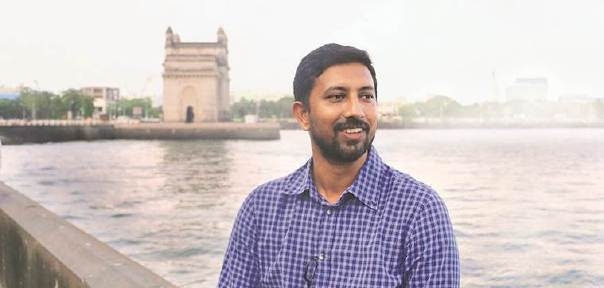
The Race of a Lifetime

The Race of a Lifetime
Abhilash Tomy, the first Indian to do a solo non-stop circumnavigation of the globe, is preparing for a bigger challenge in 2018.
Commander Abhilash Tomy is not afraid to be alone at sea. “Solitude in itself causes me no turmoil,” he says, “In fact, I dread other people’s company when out on a boat. I find it very stressful, not just because of the constant proximity but because you lose the freedom to just be yourself. Out on the sea, when you’re all alone, all your conditioned behaviours disappear. Even the conversation that you have with yourself is only of the most essential nature.
It could be said that Tomy’s experience in this matter is considerable. On March 31 in 2013, he had become the first Indian to complete a solo non-stop circumnavigation of the world by boat, a round-the-world trip that began on November 1, 2012. While at sea, he would spend his time doing chores around the boat, cooking, reading and snatching rest whenever possible. Of the 151 days of the trip, he spent 130 without catching sight of a single human being. “It was a period of high stress, of course, and you’re on survival mode when you’re on the boat,” he says.
For Tomy, who works as a reconnaissance pilot in the Indian navy, the trip around the world was a way of living his boyhood fantasies of adventures at sea, inspired by books like Treasure Island and Moby-Dick. Now he is preparing for the Golden Globe Race – a more arduous adventure that begins next June from Plymouth in the UK and commemorates the 50th anniversary of the 1968-69 Sunday Times Golden Globe Race.
The 1968 event was the first round-the-world yacht race and began with nine participants who set sail from Great Britain. The challenge was to complete an unassisted, non-stop, solo circumnavigation of the world via the Great Capes. Four competitors retired from the race before leaving the Atlantic Ocean, while one sailed past the Cape of Good Hope before retiring. A sixth, Nigel Tetley, had to abandon his boat, after it was severely damaged in a storm, while Frenchman Bernard Moitessier gave up after losing faith in the commercialised nature of the competition. One competitor, Donald Crowhurst, who had begun to show signs of depression and had started falsifying his position, killed himself before completing the journey. The only person who finished was Robin Knox-Johnston who, ironically, was initially seen as the sailor least likely to succeed in the race.
While there have been many technological advances in the last 50 years, the 2018 race is going to be challenging because it seeks to recreate the conditions under which Knox-Johnston and the others set sail. “This means that we won’t be allowed to use any new technology that has been developed since then. If it didn’t exist in 1968, we can’t use it. So that means no GPS, electronic watches, electronic compass, electronic meter. We are permitted to use LED lights, a few solar panels and wind generators,” says Tomy. Even the boats would have to be of traditional construction, with no modern, faster designs allowed, so he has got a replica of Knox-Johnston’s 32 foot wooden sailboat made. “Basically, you’re on a small, slow boat and you can’t carry too much food or water. You also don’t have modern means of navigation. You can use a sextant, which is very accurate. But to get your positions, you would have to use a very accurate watch along with the sextant and this is usually a two-person job because even if you’re off by a
second, it makes a difference of about one or two kilometres,” says the 38-year-old.
Then there’s the fact that on his last voyage around the world, Tomy could rely on detailed graphic representations of the weather to prepare himself and his boat. On the planned trip in 2018, he will have to rely entirely on weather reports heard over the radio and a barometer. But in Tomy’s opinion, the only major problem is the size of the boat. In 2012-13, the boat he used, Mhadei, was 56 feet long and weighed 23 tonnes. At a mere 32 feet and eight tonnes, the new boat Thuriya stands a greater chance of being upended by waves that can reach over 10 metres during a storm.
So how has Tomy been preparing for the upcoming adventure? “Physically, I’m not doing much because in my experience, when you start working on the boat, you begin to develop the stamina and the muscles that you need the most. I’m taking calcium and vitamin D supplements a year in advance because in the Southern ocean, there’s little sunlight.” Is he prepared for 300-odd days alone at sea, with only the occasional dolphins and seagulls for company? Tomy grins. “Mentally, I’ll do just fine. I’ve been alone on a boat in the sea before, so I know what to expect.”








